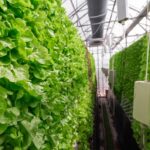When it comes to boosting crop productivity, farmers often focus on macronutrients such as nitrogen, phosphorus, and potassium (NPK). While these elements are crucial for plant growth, micronutrients—often referred to as trace elements—play a significant role in optimizing crop yields. Micronutrients are essential for plant health and development, even though they are required in smaller quantities compared to macronutrients. Their importance cannot be overstated, as they influence various biological processes that can lead to higher crop yields, improved resistance to diseases, and better-quality produce.
This article will explore the best micronutrients for high-yield crops and explain how each one contributes to optimal plant growth and productivity.
What Are Micronutrients, and Why Are They Important?
Micronutrients are essential elements that plants need in small amounts to carry out vital biochemical processes. While they may be required in trace quantities, their role in plant metabolism is crucial for achieving high yields. Deficiencies in these micronutrients can lead to stunted growth, poor yields, and susceptibility to diseases and pests.
Micronutrients typically include:
- Iron (Fe)
- Manganese (Mn)
- Zinc (Zn)
- Copper (Cu)
- Molybdenum (Mo)
- Boron (B)
- Chlorine (Cl)
- Nickel (Ni)
Each of these elements performs a specific function in plant health, from enzyme activation to chlorophyll production. When supplied in the right amounts, micronutrients enhance photosynthesis, root development, flowering, and fruiting, all of which contribute to higher crop yields.
Best Micronutrients for High-Yield Crops
1. Iron (Fe)
Iron is one of the most important micronutrients for plant growth. It plays a key role in chlorophyll production, which is vital for photosynthesis. Without sufficient iron, plants cannot efficiently produce food from sunlight, leading to poor growth and reduced yields.
- Key Functions of Iron:
- Supports chlorophyll formation, which is essential for photosynthesis.
- Helps activate enzymes involved in respiration and nitrogen fixation.
- Promotes root development and disease resistance.
- Deficiency Symptoms: Iron deficiency often manifests as yellowing between leaf veins, especially in younger leaves. This condition, known as iron chlorosis, can severely impact crop yields if not addressed.
2. Zinc (Zn)
Zinc is crucial for the production of enzymes that regulate plant growth and development. It is involved in DNA synthesis, protein formation, and hormone regulation. Zinc also plays a vital role in the formation of chlorophyll and contributes to the plant’s immune system.
- Key Functions of Zinc:
- Activates enzymes involved in carbohydrate and protein metabolism.
- Enhances root development and seed production.
- Increases disease resistance and improves photosynthesis.
- Deficiency Symptoms: Zinc deficiency can cause stunted growth, reduced leaf size, and a characteristic interveinal chlorosis (yellowing between leaf veins), particularly in the younger leaves. A lack of zinc can result in poor fruit and seed set, reducing yields.
3. Manganese (Mn)
Manganese plays a crucial role in photosynthesis by aiding in the formation of chlorophyll and activating various enzymes. It also helps in the breakdown of carbohydrates, making energy available for plant growth.
- Key Functions of Manganese:
- Assists in chlorophyll production, improving photosynthesis efficiency.
- Activates enzymes involved in nitrogen metabolism and energy production.
- Strengthens the plant’s defense mechanisms against pathogens.
- Deficiency Symptoms: Manganese deficiency is characterized by interveinal chlorosis and necrotic spots on older leaves. In severe cases, the plant may exhibit stunted growth and poor flowering, which negatively affects crop yields.
4. Copper (Cu)
Copper is essential for the formation of certain enzymes that are crucial for plant metabolism. It aids in photosynthesis and respiration, and is also involved in lignin synthesis, which strengthens cell walls and enhances plant structure.
- Key Functions of Copper:
- Activates enzymes involved in respiration and photosynthesis.
- Supports the formation of lignin, improving plant strength and disease resistance.
- Enhances the formation of roots and flowers.
- Deficiency Symptoms: Copper deficiency may result in stunted growth, curled or deformed leaves, and poor fruit set. A lack of copper can also lead to reduced disease resistance, making crops more susceptible to infections.
5. Boron (B)
Boron plays a key role in the transport of sugars and the development of cell walls. It is vital for the growth of root tips, flowers, and fruits, as well as for seed development. Boron is particularly important for ensuring successful pollination and fruit set.
- Key Functions of Boron:
- Supports carbohydrate transport and metabolism within the plant.
- Plays a critical role in cell wall formation, ensuring structural integrity.
- Promotes effective pollen tube growth and fertilization.
- Deficiency Symptoms: Boron deficiency often leads to poor root growth, flower abortion, and a lack of fruit set. It can also cause cracks in fruit and reduced crop yields. In some crops, such as grapes and apples, boron deficiency can cause fruit deformities.
6. Molybdenum (Mo)
Molybdenum is essential for nitrogen metabolism. It helps in the conversion of nitrate to ammonium, a form of nitrogen that plants can use for growth. Molybdenum is crucial for leguminous crops, such as beans and peas, as it supports nitrogen fixation.
- Key Functions of Molybdenum:
- Aids in nitrogen fixation, particularly in legumes.
- Enhances enzyme activity for nitrate reduction in plants.
- Supports healthy root development and overall growth.
- Deficiency Symptoms: Molybdenum deficiency can cause yellowing of older leaves, poor growth, and reduced crop yields. In legumes, a lack of molybdenum impairs nitrogen fixation, leading to stunted plants and poor harvests.
7. Chlorine (Cl)
Chlorine is involved in several plant processes, including photosynthesis and osmoregulation (water balance). It also plays a role in activating enzymes and stabilizing cell structures.
- Key Functions of Chlorine:
- Aids in water regulation within plant cells.
- Assists in photosynthesis by facilitating the opening and closing of stomata.
- Enhances disease resistance and plant stress tolerance.
- Deficiency Symptoms: Chlorine deficiency is rare but can cause wilting, yellowing, and reduced photosynthetic efficiency. This typically happens in plants grown in waterlogged soils, which leach chlorine from the root zone.
8. Nickel (Ni)
Nickel, though required in very small amounts, is crucial for the proper functioning of certain enzymes involved in nitrogen metabolism. It also aids in the breakdown of urea in plants.
- Key Functions of Nickel:
- Supports nitrogen metabolism and urea breakdown.
- Improves plant health and stress tolerance.
- Enhances enzyme function and overall plant metabolism.
- Deficiency Symptoms: Nickel deficiency is rare but can cause poor seed germination and poor fruit quality in some crops. It is most commonly seen in legumes.
How to Provide Micronutrients to Crops
Micronutrient deficiencies are commonly corrected through the application of fertilizers. These can be either soil-applied or foliar-applied:
- Soil-applied fertilizers: These include granular or liquid fertilizers that are mixed into the soil, where they are absorbed by the plant’s roots.
- Foliar sprays: In cases where deficiencies are detected early, micronutrients can be applied directly to the plant’s leaves for quick absorption.
To ensure that crops receive the right amount of micronutrients, it is essential to perform regular soil tests and leaf analysis. This helps identify any deficiencies and allows farmers to tailor their fertilization strategies accordingly.
Micronutrients play a critical role in achieving high crop yields, and their impact on plant growth should not be underestimated. Iron, zinc, manganese, copper, boron, molybdenum, chlorine, and nickel all contribute to essential physiological processes that enhance crop health, disease resistance, and productivity. By ensuring that these micronutrients are available in the correct amounts, farmers can maximize crop yields, improve quality, and optimize resource usage. Regular monitoring and proper fertilization practices will help ensure that plants have the necessary nutrients for optimal growth, leading to healthier crops and more abundant harvests.
Join 'Farmers Mag' WhatsApp Channel
Get the latest Farming news and tips delivered straight to your WhatsApp
CLICK HERE TO JOIN






